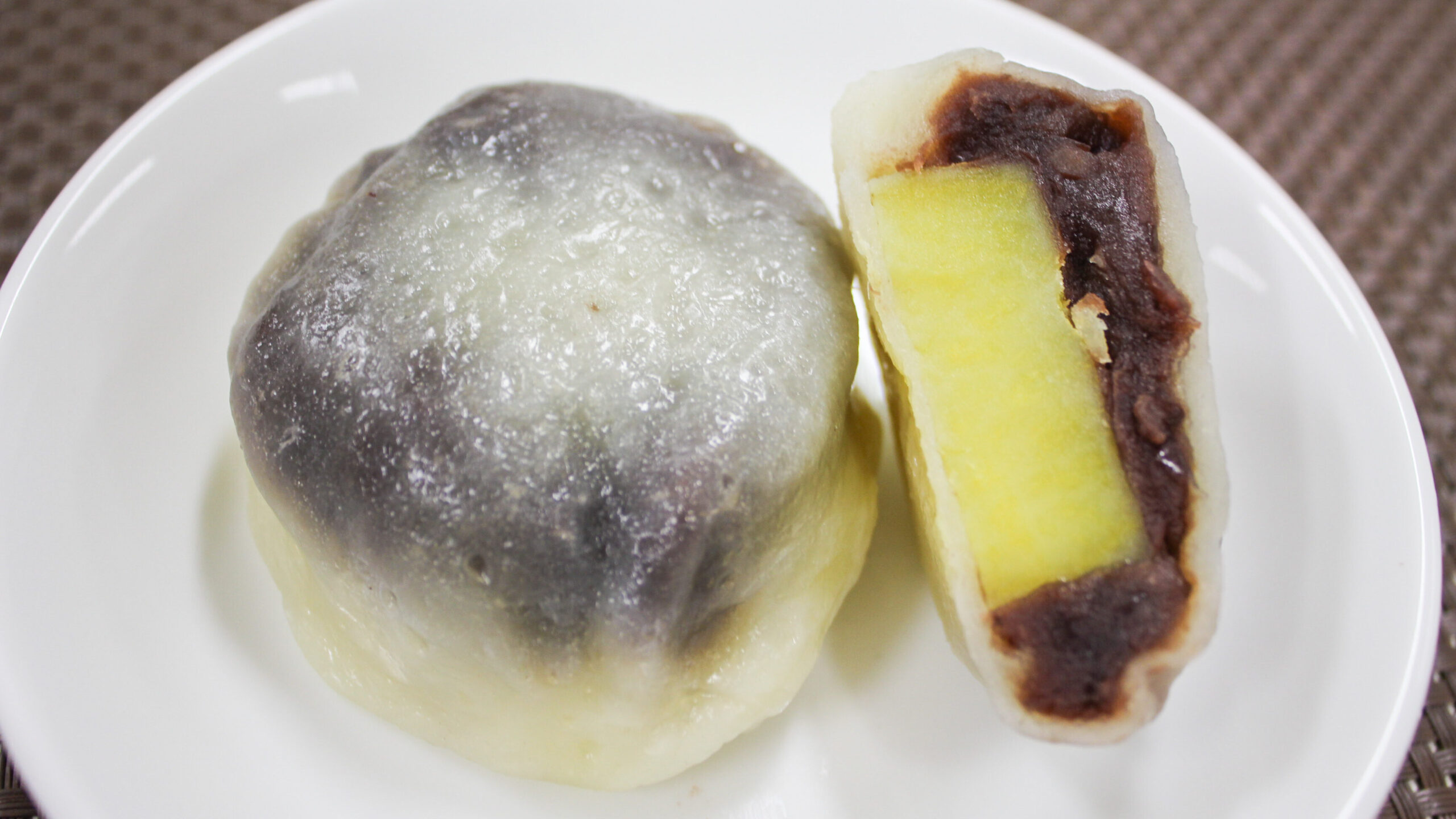
Hey there, snack lovers! Let’s talk about a simple yet satisfying treat from Kumamoto: Ikinari Dango. It’s a rustic dumpling made with sweet potato wrapped in a wheat flour dough and steamed to perfection. This local delight is a true taste of Kumamoto’s agricultural heartland, and its name tells you all about its easygoing nature.
Dish Name: Ikinari Dango
- Region / Location: Kikuchi region, Kumamoto Prefecture.
- Primary Area of Tradition: Kikuchi area.
- Main Ingredients: Sweet potato, wheat flour, anko (sweet red bean paste).
How It’s Eaten / Served
Ikinari Dango is enjoyed as a snack, ideally fresh and hot. When purchased as a souvenir, it’s often frozen and can be reheated in a microwave or steamer.
Cultural Background and Preservation
Ikinari Dango is a simple, rustic snack made by wrapping slices of sweet potato in a wheat flour dough and steaming it. In areas around the Aso volcano, including Otsu, which is a major sweet potato producing area, farmers in the Kikuchi and Kumamoto plains often made Ikinari Dango as a snack during the autumn harvest season. The word “ikinari” in the name comes from the Kumamoto dialect, meaning “easily,” “quickly,” or “suddenly,” reflecting how quickly and easily it can be made and served, even for unexpected guests. The dough is made from wheat flour and sometimes dango-ko (rice flour), though in times when rice was scarce, only wheat flour was used. While sweet potato was the original filling, anko (sweet red bean paste) has become a popular addition in recent decades, with the combination of the sweet potato, the sweetness of the anko, and the slight saltiness of the dough being a hit. Nowadays, you’ll find variations with mugwort or brown sugar dough, kinako (roasted soybean flour) coatings, or fillings like purple sweet potato, chestnuts, or walnuts. While traditionally eaten hot, frozen and partially thawed “chilled Ikinari Dango” have also become popular.
Originally a homemade snack enjoyed during sweet potato season, Ikinari Dango is now widely available in specialty shops, traditional confectioneries, and street stalls, making it an everyday treat. Its simple, not-too-sweet flavor is popular as a tea-time treat or a snack for kids.
Ikinari Dango is well-known as a Kumamoto souvenir and is sold in numerous specialty stores. It’s also a common dish in local cooking classes and is frequently made at home. It’s even served as a dessert in school lunches.
Additional information:
- Dango-ko (だんご粉): Rice flour specifically for making dango (Japanese dumplings).
- Anko (あんこ): Sweet red bean paste.
- Kinako (きなこ): Roasted soybean flour.
The information about regional cuisine featured on this website (Piggy's Grandma of Japan) is summarized and adapted from the Ministry of Agriculture, Forestry and Fisheries of Japan (MAFF) website, "Our Regional Cuisines"Additional commentary is provided based on the unique experiences and perspectives of the site's editors.
The copyright for the original content regarding regional cuisine belongs to the Ministry of Agriculture, Forestry and Fisheries of Japan.
The summaries and adaptations published on this site are intended for informational purposes only. Piggy's Grandma of Japan does not guarantee the accuracy or completeness of this information. For the most accurate and complete details, please refer to the original pages on the MAFF website.

